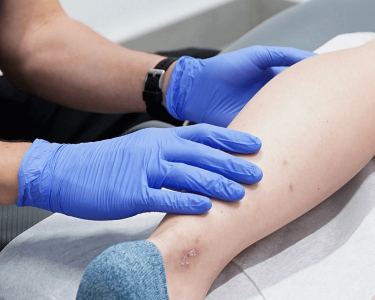In the world of welding, safety should always come first. Whether you’re a seasoned professional or a hobbyist, protecting yourself from the hazards of welding is paramount. Among the essential gear for welders, a welding jacket stands out as a critical piece of equipment. In this article, we delve into why a welding jacket is necessary, what features to look for when choosing one, and how to care for it to ensure longevity.
Why Do You Need a Welding Jacket?
Welding involves working with extreme heat, sparks, and molten metal—conditions that pose significant risks to the welder’s safety. A welding jacket serves as a protective barrier against these hazards, shielding the wearer’s skin and clothing from burns, sparks, and spatter.
Beyond protection from burns, welding jackets also offer insulation against radiant heat. This is particularly crucial when working in close proximity to high-temperature welding processes such as MIG (Metal Inert Gas) or TIG (Tungsten Inert Gas) welding. Exposure to radiant heat can cause discomfort and even heat-related injuries, making a properly insulated welding jacket indispensable.
Key Features to Consider
When selecting a welding jacket, several factors come into play to ensure optimal protection and comfort:
- Material: Welding jackets are commonly made from leather or flame-resistant (FR) fabrics such as cotton or a blend of materials like cotton and polyester. Leather jackets provide excellent protection against sparks and spatter, while FR fabrics offer lightweight and breathable options. Consider the specific welding applications and environments you’ll be working in to choose the most suitable material.
- Thickness: The thickness of the jacket’s material impacts its durability and heat resistance. Thicker materials, such as heavy-duty leather, offer superior protection against sparks and heat but may sacrifice flexibility and comfort. Conversely, thinner materials provide greater mobility but may offer less protection. Strike a balance between protection and comfort based on your welding needs.
- Fit and Mobility: A well-fitting welding jacket should allow for ease of movement without being too loose or restrictive. Look for jackets with articulated sleeves and ergonomic designs that enable freedom of movement, crucial for intricate welding tasks that require precision and dexterity.
- Closure Mechanism: The closure mechanism, typically consisting of buttons, snaps, or hook-and-loop fasteners, ensures a secure fit and helps prevent sparks and debris from entering the jacket. Opt for closures that are easy to manipulate with gloved hands and provide a tight seal around the wrists and neck.
- Additional Features: Some welding jackets come equipped with extra features for added convenience and functionality, such as reinforced seams, pockets for storing tools, and adjustable cuffs and collars. Consider these features based on your specific welding requirements and preferences.
Proper Care and Maintenance
To maximize the lifespan and effectiveness of your welding jacket, proper care and maintenance are essential:
- Cleaning: Regularly clean your welding jacket to remove dirt, debris, and metal particles that can compromise its protective properties. Follow the manufacturer’s instructions for cleaning, as methods may vary depending on the material.
- Storage: Store your welding jacket in a cool, dry place away from direct sunlight and heat sources when not in use. Hanging the jacket on a sturdy hanger can help maintain its shape and prevent creases.
- Inspection: Periodically inspect your welding jacket for signs of wear and tear, such as frayed seams, holes, or damage to the protective coating. Replace the jacket if any significant damage is detected to ensure continued protection.
- Repairs: Promptly repair any minor damage to your welding jacket, such as small tears or loose seams, to prevent further deterioration. Consider consulting a professional if extensive repairs are needed.
- Replacement: While proper maintenance can prolong the life of your welding jacket, it will eventually wear out over time, especially with regular use. Replace your jacket as needed to ensure ongoing protection and safety.
Conclusion
A welding jacket is more than just a piece of clothing—it’s a crucial tool for ensuring the safety and well-being of welders in a hazardous work environment. By choosing the right jacket with the appropriate features and materials, and by diligently caring for and maintaining it, welders can work with confidence, knowing they are adequately protected against the risks associated with welding. Investing in a high-quality welding jacket is an investment in safety, comfort, and peace of mind.
You can also read our blog: The long-awaited iPad event may have a date,







1 Comment